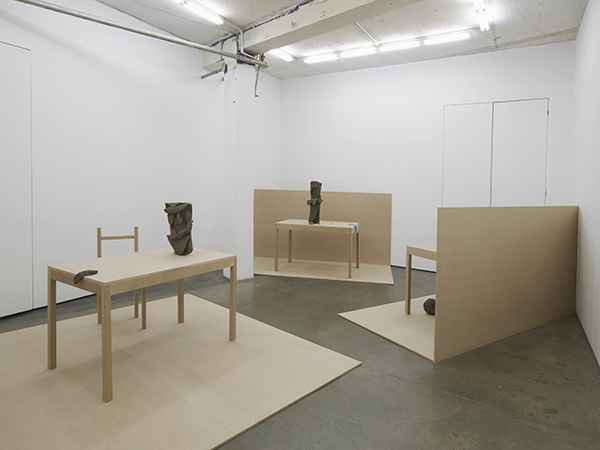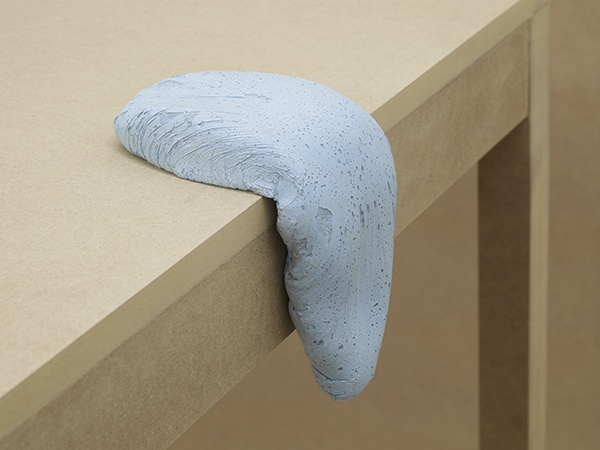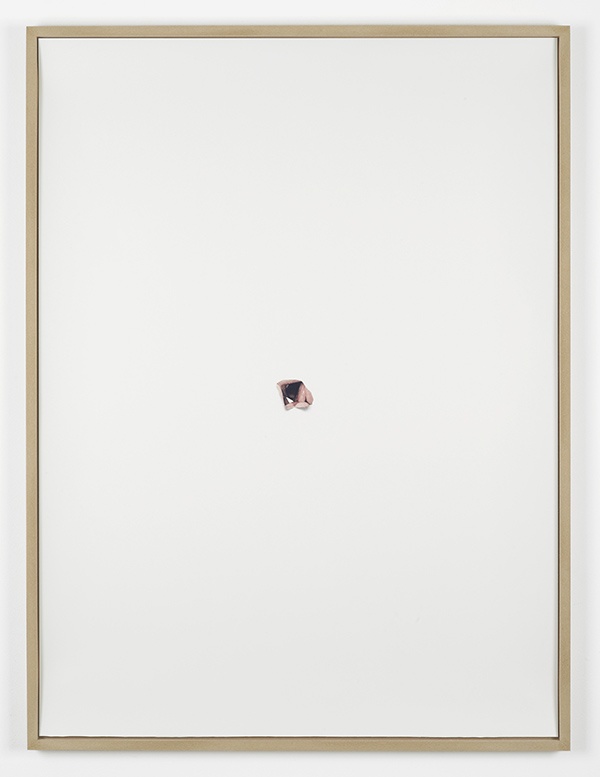Michael Dean
Tuesday, 21 May 2013
Work from his exhibition at Herald St, London.
“If you say “haha,” aloud, you are not, under any circumstances, laughing. In fact it is something like the opposite of a laugh, the onomatopoeia of a dead laugh. You are laughing at laughing, or at best describing it (‘funny haha’). That is why, in transcriptions of interviews for example, laughter often becomes instead a stage direction, a non-verbal cue in parentheses: “(laughs)… (laughter)…”
If you write “haha,” on the other hand – rather, for example, than “lol” – you are begging the question. You are choosing, deliberately, to inhabit the ambiguity of writing, its indecision between saying and doing, its fundamental indirection. It is, just, possible for “haha” on the page to be a sympathetic form of laughter rather than its mockery; but it is impossible that it evades the possibility of mockery – which is to say, the possibility of irony – entirely.
“The white of the word” – the space within and between individual letters – is, according to Gerrit Noordzij in his theory of writing, what makes any script legible. Comparing forms of writing by examining the “black of the letter,” he says, means attending only to the “superficial differences,” because the various ways that a letter can be composed – from a quill pen to a typewriter (to a concrete cast) – are so incommensurable. The only aspect which absolutely every form of writing, of every epoch, has in common, and by which they can be accurately compared, are the “manifest relationships” of spacing, the ways in which the page becomes a ground for the letter’s figure. Noordzij is alive to the peculiarities of the functioning of this spacing – for example, he notes that ‘n’ and ‘u’ are really the same letter, the same stroke, and their meaning is dependent on our orientation – but one thing he does not seem to consider is what happens behind letters.
One way of approaching Michael Dean’s art is to think of it as a form of writing in which none of the relationships are manifest. The fact that his objects are, apparently, based on words composed from a typographic alphabet of his own design and which he has not shared seems to make of them something esoteric, as if we were pith-helmeted scholars confronted by the language of some ancient priestly caste. Nothing is self-evident: we can’t even be sure of distinguishing letter from spacing, so that we may begin to feel that the work resembles the ultimate private language, an illegible cryptogram. And in this show, when the reverse of Dean’s recalcitrant letter forms are inhabited by casts of lock mechanisms, we seem at risk of being doubly excluded.
What can it mean to cast a series of tumbler locks? Is this a mocking gesture, a “HAHA” (delivered in the style of Nelson from The Simpsons)? If we read the sculptures in this way then it would seem Dean is making an ironic gesture, revealing what lies ‘behind’ his letters as only the mechanism by which their secret remains locked away. Are these works, then, a carnival mirror of our desire to unpick them, a pantomime of their own reticence? There is no getting away from it: this is a collection of locks without keys. What more taunting form of secrecy could there be?
At the same time, these lock forms are outsize and exposed. These are not closed doors, or keyholes: they are naked mechanisms, diagrams after the fashion of a how-to book, enlarged for clarity. They are a promise, of sorts, a kind of open secret. And they are repeated, with variation, which perhaps becomes, after all… somewhat funny haha. Unlike many of Dean’s previous sculptures, the works in this show also stand away from the wall and turn their faces away from us. They even seem, on occasion, to blush. This reading would leave us with a new question: what does it mean to be embarrassed about being reticent, but to refuse to give it up and instead to insist on it, blushingly?” – Herald St, London
via Mousse Magazine



